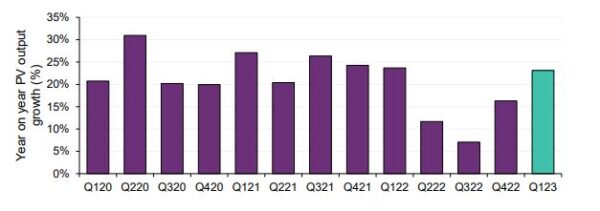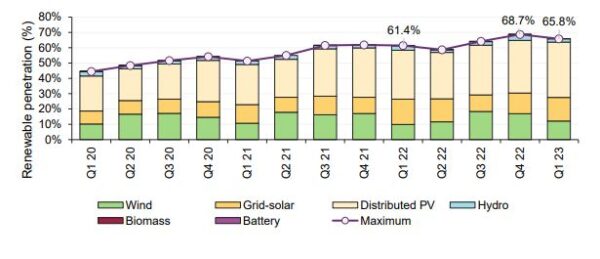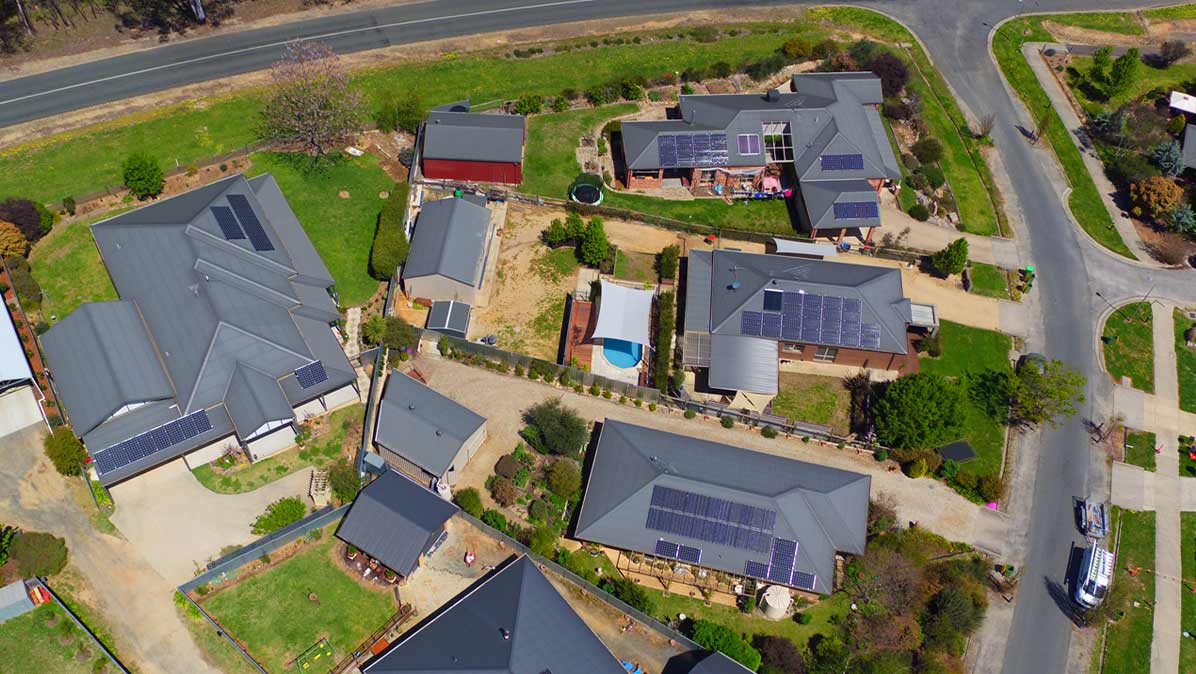New highs in renewable energy generation, including record average output from rooftop solar, has resulted in the lowest demand in the National Electricity Market (NEM) in the March quarter since 2005, according to the Australian Energy Market Operator’s (AEMO) latest market intelligence report.
AEMO’s Q1 Quarterly Energy Dynamics report shows the average output of rooftop solar reached a record 2,962 MW for the first three months of 2023. The market operator said this was up 23% compared with the same period in 2022, reflecting resumption of high distributed PV installation growth rates after a slowdown in 2022.
Generation from large-scale solar and wind also surged during the quarter by an average 330 MW and 134 MW respectively, yielding a record quarterly average of 4,654 MW, or 11% higher than the same time last year. The increases in grid-scale solar and wind output were attributed in part to new and recently commissioned units coming online.
AEMO said the record solar generation saw instantaneous penetration of renewable energy peak at 65.8% during the quarter, but it was mostly about 37% of total power generation. At the high, which was up 4.4% on the previous record, rooftop solar accounted for 36% of supply.
Rooftop solar output peaked on 11 February 2023, reaching a record high of 11,504 MW, up 818 MW on the previous high achieved in Q4 2022.

Image: AEMO
AEMO Chief Executive Officer Daniel Westerman said the insights highlight the fundamental changes underway as Australia’s energy system transitions from fossil fuels to renewable sources.
However, Westerman said the report also reinforces the need for more investment in new transmission infrastructure and “firming technology” to help the grid cope with the switch, noting that a number of major renewable energy projects in the Murray region of Victoria and southwest NSW were unable to supply their full capacity to the grid because of constraints in the transmission network.
“These insights reinforce that critical transmission investments, such as VNI West and EnergyConnect, are needed to share low-cost, low-emission renewable energy with consumers,” he said.
“This is clear with the projects in Victoria’s Murray River renewable energy zone that are burdened with generation impacts.”
In spite of constraint concerns, the growth in renewables helped deliver new records for minimum demand, drove wholesale electricity costs down to historic levels, and helped reduce emissions to record lows as coal-fired and gas generation decreased.

Image: AEMO
The record levels of solar generation contributed to the lowest operational demand for the first quarter of the year since Tasmania joined the NEM in May 2005, at 14,375 MW.
The AEMO report shows that operational demand declined to 21,181 MW, the lowest first quarter average since Tasmania joined the NEM in 2005. The new mark was 1.5% down on the same period last year. Operational demand bottomed out on 21 January 2023, reaching a record low of 14,375 MW in the half-hour ending 12.30pm.
Wholesale spot electricity prices in the NEM averaged $83 per megawatt hour (MWh) for the March quarter, down $10/MWh from the previous quarter and $4/MWh from the same time last year.
“Growing renewable output across the NEM meant that 12% of the time wholesale prices were negative or zero. Further, between 9.00 am and 5.00 pm, wholesale electricity prices were negative in South Australia and Victoria 60% and 55% of the time, respectively,” Westerman said.
The report also showed a record March quarter low for greenhouse gas emissions at 28.83 million tonnes, down 5.1% on a year earlier as electricity generation from coal and gas declined.
This content is protected by copyright and may not be reused. If you want to cooperate with us and would like to reuse some of our content, please contact: editors@pv-magazine.com.









By submitting this form you agree to pv magazine using your data for the purposes of publishing your comment.
Your personal data will only be disclosed or otherwise transmitted to third parties for the purposes of spam filtering or if this is necessary for technical maintenance of the website. Any other transfer to third parties will not take place unless this is justified on the basis of applicable data protection regulations or if pv magazine is legally obliged to do so.
You may revoke this consent at any time with effect for the future, in which case your personal data will be deleted immediately. Otherwise, your data will be deleted if pv magazine has processed your request or the purpose of data storage is fulfilled.
Further information on data privacy can be found in our Data Protection Policy.